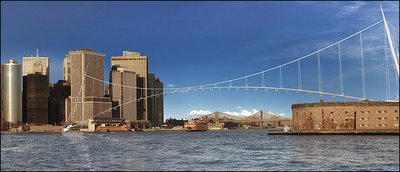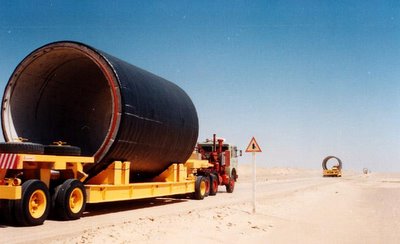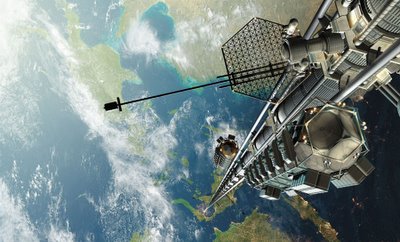New York City’s Mayor Michael Bloomberg recently announced an interest in building a network of gondolas across New York City.
Well… not quite a “network” – “across New York City” – but one route, “linking Brooklyn to Manhattan by way of Governors Island on a tramway.”
Governors Island, incidentally, is a small island in the New York harbor: “The city and state of New York bought the island in 2002 from the U.S. government for $1. Until 2000, it had been the longest continuously used U.S. military facility, dating back more than 200 years.” $1!
 [Image: Governors Island, upper left; Manhattan, upper right. The rest is Brooklyn. The gondola would go zipping back and forth].
[Image: Governors Island, upper left; Manhattan, upper right. The rest is Brooklyn. The gondola would go zipping back and forth].
In any case, the gondola, “estimated to cost $125 million, would be designed by the architect Santiago Calatrava, and would greatly change the face of Upper New York Bay. But there is a catch,” we read: Bloomberg “acknowledged that the system was still only an idea. He said, however, that he hoped it would eventually become reality and in the meantime inspire others to come up with big ideas for the development of Governors Island.”
Like a Shakespearean theatre?
Well, here’s an idea:
More routes. More gondolas. Gondolas you can rent as a live/work space. Private gondola routes, from high-rise to high-rise, with windows of bulletproof glass. Night-club gondolas. Church confessional gondolas. Flying prison cells, an Alcatraz of the sky, reforming criminals through scenic views.
Different architects and engineering firms should design the gondolas – Foster and Partners, Zaha Hadid, Michael Sorkin, Halcrow, even BLDGBLOG – and they shouldn’t stop there: gondolas linking to gondolas, which in turn link to more gondolas. Gondolas switching through Ferris wheels. Gondolas connecting to the space elevator – which leads upward to gondolas in space… then back to Greenwich Village. Return trip: two hours.
The city could recoup its investment by selling film permits to Hollywood. Die Hard 4.
Gondola greenhouses that follow the sun in a heliocentric circuit round Manhattan, growing mutant flowers.
An airborne hospital for the depressed.
Rumors break out that there is a hidden gondola somewhere, itself unreachable by gondola – Kabbalists and Aristotelians argue that, in fact, this is impossible, citing Maimonides. Entire websites go up, dedicated to finding it.
Folk maps are produced, printed in the back of Time Out, charting the fastest route, the most interesting route, the longest route, the scenic route. A listserv begins, describing gondola hacks: how to make your gondola do a 360º.
You can win the Olympics with it.
Alternatively, forget the gondolas: Governors Island, in its 172-acre entirety, should be uprooted, dismantled, geologically ground-down to soil and dust – then hung from a series of sacks and hammocks off the side of the Empire State Building. Hanging gardens, indeed.

































